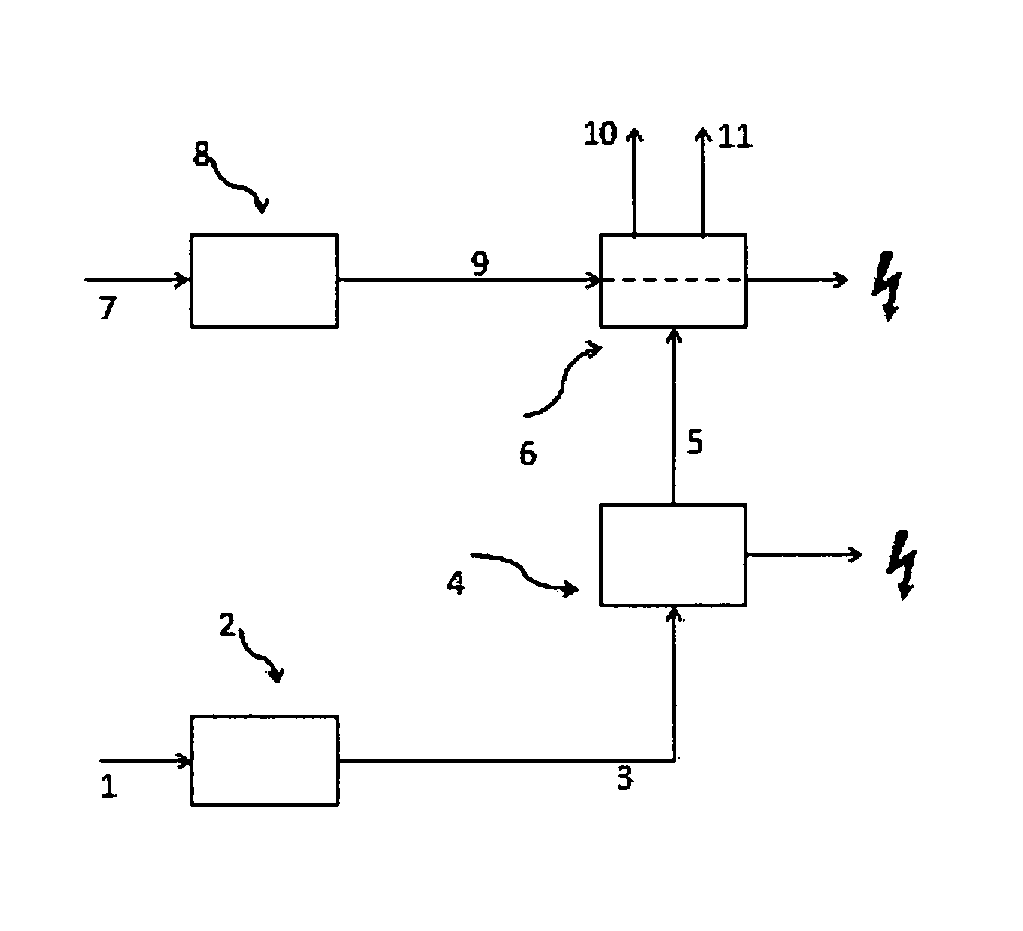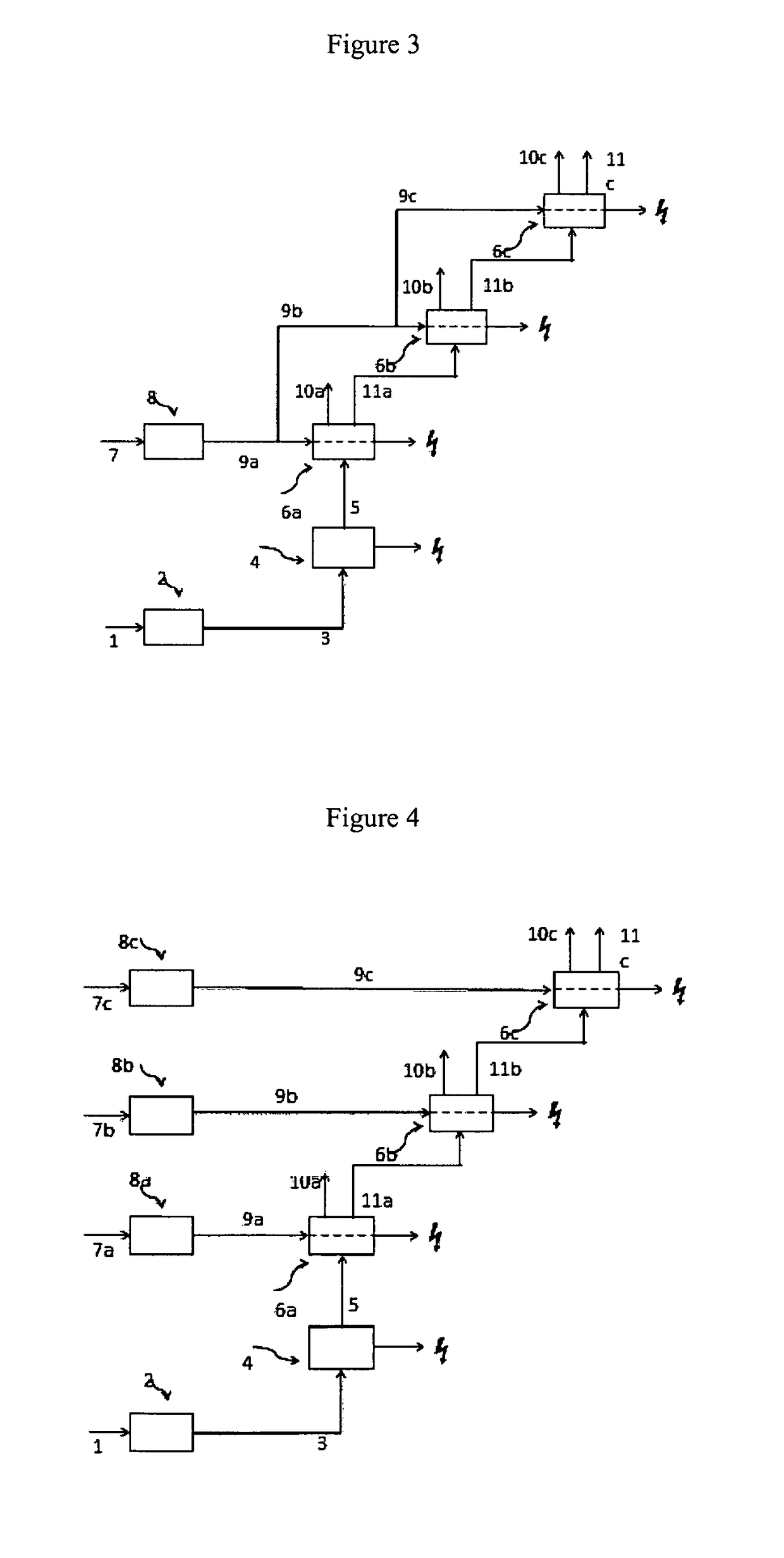Electricity generation process
a technology of electricity generation and process, applied in the direction of machine/engine, sea energy generation, geothermal energy generation, etc., can solve the problems of uneconomic process, increased pressure on the side of the membrane to which the solvent diffuses, and inability to achieve the power density of the general publi
- Summary
- Abstract
- Description
- Claims
- Application Information
AI Technical Summary
Benefits of technology
Problems solved by technology
Method used
Image
Examples
Embodiment Construction
[0033]The process of the present invention may increase the efficiency of energy generation using saline streams from geothermal formations. The process of the present invention extracts both thermal energy and latent osmotic energy from the same warm saline stream obtained from a geothermal formation. In addition to the increase in power generation which may be expected from extracting two different types of energy from the same source, the two energy extraction processes may complement each other to reduce inefficiencies in each process caused by certain characteristics of warm saline steams from geothermal formations.
[0034]Saline streams from geothermal formations may provide increased salt concentrations compared to, for example, sea water. Increased salt concentrations in the high-salinity input stream of an osmotic power unit may allow for increased power density during pressure retarded osmosis (PRO). Saline streams from geothermal formations may also carry a lower risk of th...
PUM
 Login to View More
Login to View More Abstract
Description
Claims
Application Information
 Login to View More
Login to View More - R&D
- Intellectual Property
- Life Sciences
- Materials
- Tech Scout
- Unparalleled Data Quality
- Higher Quality Content
- 60% Fewer Hallucinations
Browse by: Latest US Patents, China's latest patents, Technical Efficacy Thesaurus, Application Domain, Technology Topic, Popular Technical Reports.
© 2025 PatSnap. All rights reserved.Legal|Privacy policy|Modern Slavery Act Transparency Statement|Sitemap|About US| Contact US: help@patsnap.com



